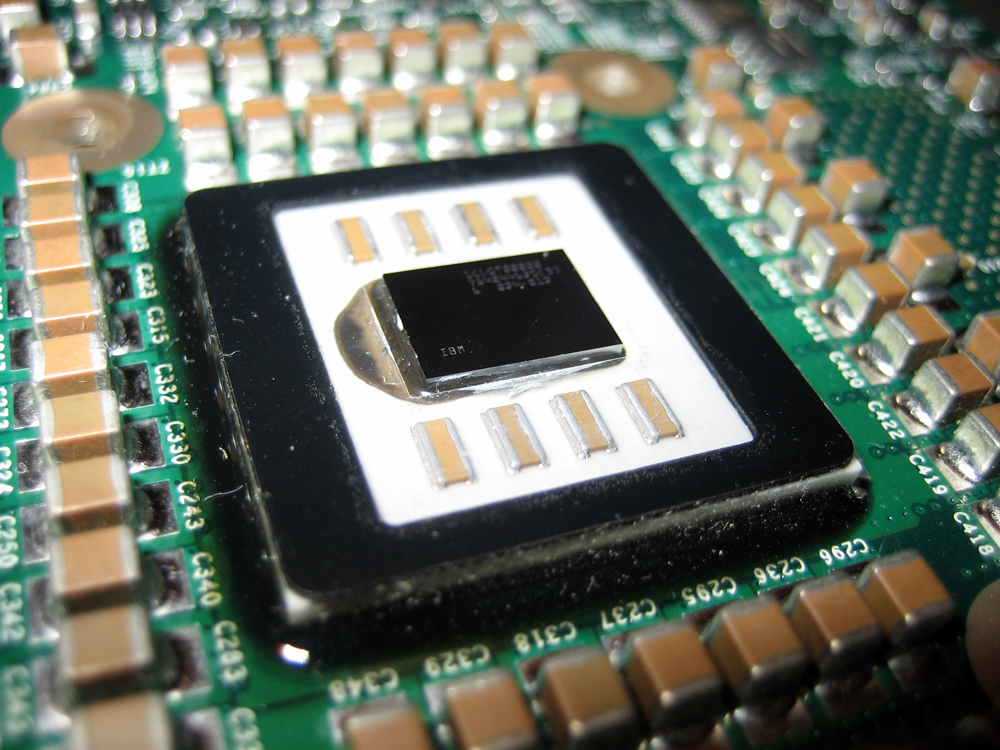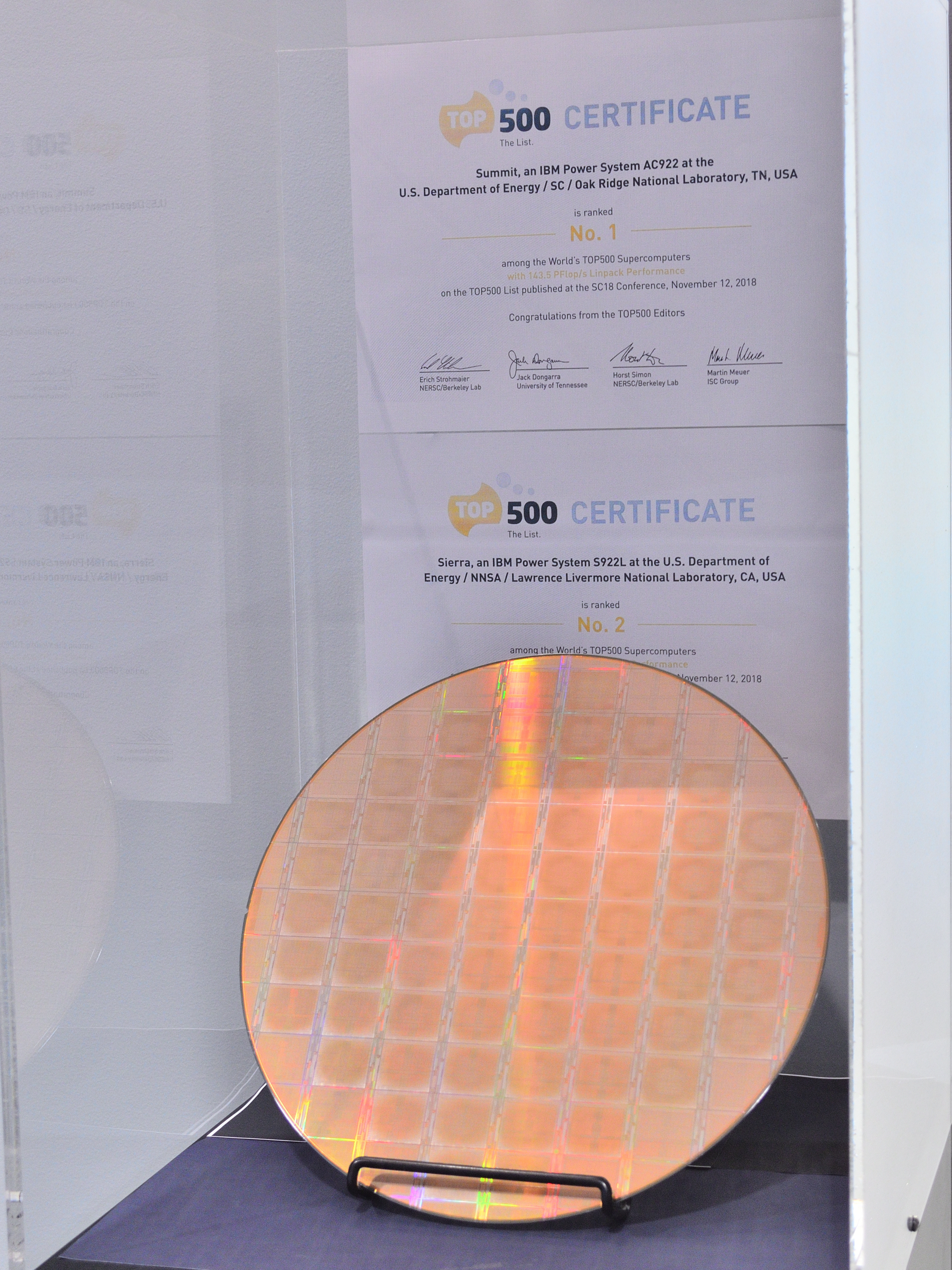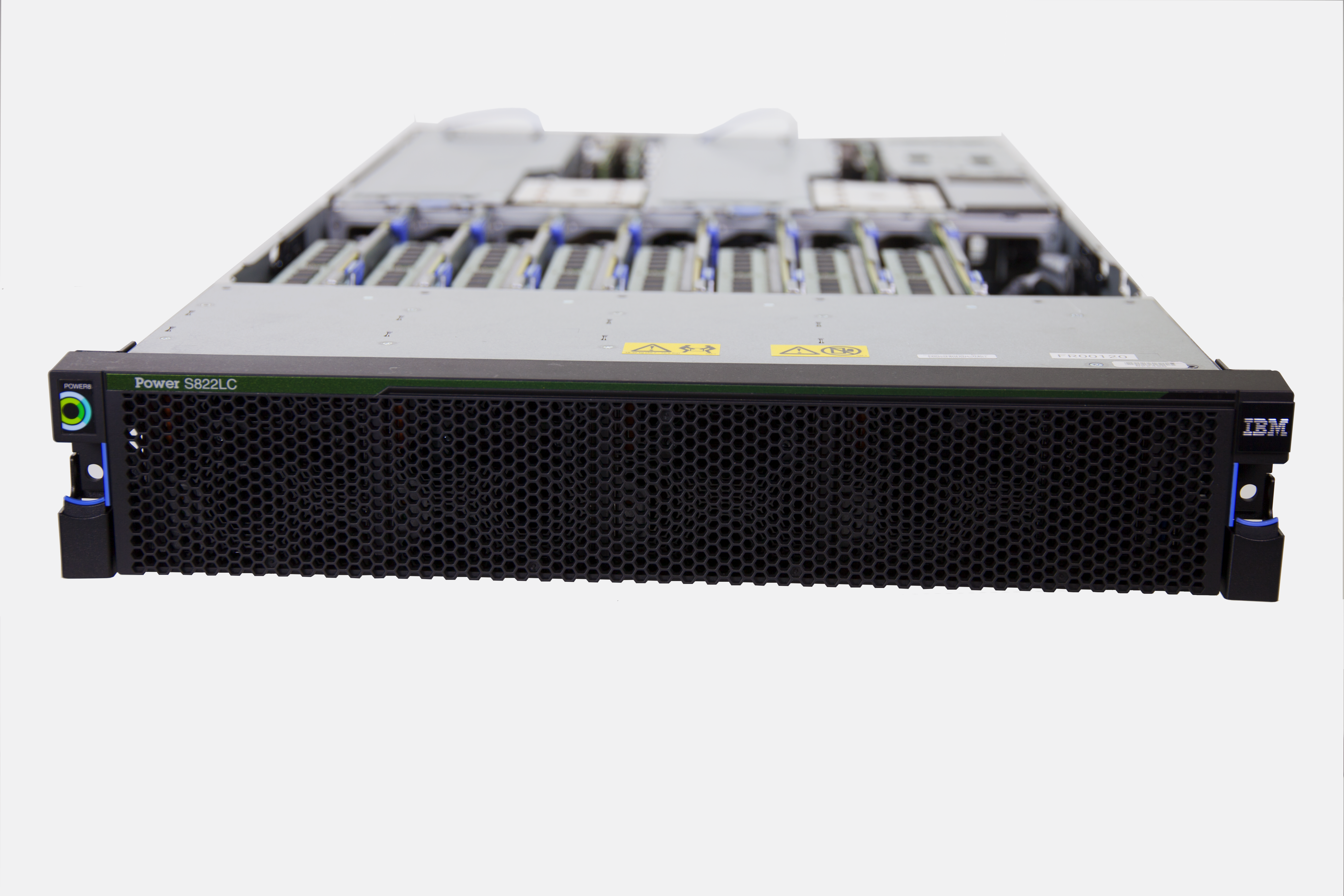|
Ppc64
ppc64 is an identifier commonly used within the Linux, GNU Compiler Collection (GCC) and LLVM free software communities to refer to the target architecture for applications optimized for 64-bit big-endian PowerPC and Power ISA processors. ppc64le is a pure little-endian mode that has been introduced with the POWER8 as the prime target for technologies provided by the OpenPOWER Foundation, aiming at enabling porting of the x86 Linux-based software with minimal effort. Details These two identifiers are frequently used when compiling source code to identify the target architecture. 64-bit Power and PowerPC processors are the following: * PowerPC 620 * RS64 – Apache, RS64-II Northstar, RS64-III Pulsar/IStar, and RS64-IV SStar * POWER3 and POWER3-II * POWER4 and POWER4+ * PowerPC 970, 970FX, 970MP and 970GX * POWER5 and POWER5+ * PPE in Cell BE, PowerXCell 8i and Xenon. * PWRficient * POWER6 and POWER6+ * POWER7 and POWER7+ * A2, A2I (used in the Blue Gene/Q) an ... [...More Info...] [...Related Items...] OR: [Wikipedia] [Google] [Baidu] |
PowerPC
PowerPC (with the backronym Performance Optimization With Enhanced RISC – Performance Computing, sometimes abbreviated as PPC) is a reduced instruction set computer (RISC) instruction set architecture (ISA) created by the 1991 Apple Inc., Apple–IBM–Motorola alliance, known as AIM alliance, AIM. PowerPC, as an evolving instruction set, has been named Power ISA since 2006, while the old name lives on as a trademark for some implementations of Power Architecture–based processors. Originally intended for personal computers, the architecture is well known for being used by Apple's desktop and laptop lines from 1994 until 2006, and in several videogame consoles including Microsoft's Xbox 360, Sony's PlayStation 3, and Nintendo's GameCube, Wii, and Wii U. PowerPC was also used for the Curiosity (rover), Curiosity and Perseverance (rover), Perseverance rovers on Mars and a variety of satellites. It has since become a niche architecture for personal computers, particularly with A ... [...More Info...] [...Related Items...] OR: [Wikipedia] [Google] [Baidu] |
OpenPower Microwatt
Microwatt is an open source soft processor core originally written in VHDL by Anton Blanchard at IBM, announced at the OpenPOWER Summit NA 2019 and published on GitHub in August 2019. It adheres to the Power ISA 3.0 instruction set and can be run on FPGA boards, booting Linux, MicroPython and Zephyr. Design Microwatt is a tiny 64-bit bi-endian scalar integer processor core, implementing a subset of the Power ISA 3.0 instruction set. It has 32× 64-bit general purpose registers and 32x 64-bit floating-point registers. It uses Wishbone for the memory interface. The initial development was done in a couple of months, included the entire integer processing functionality of the instruction set; the bare minimum to make it compliant, with no memory management unit (MMU) and no floating-point unit. Later additions to the implementation includes JTAG debugger interface, divider instructions, 16 KB instruction and 32 KB data caches, a non-hypervisor-capable MMU, pipelini ... [...More Info...] [...Related Items...] OR: [Wikipedia] [Google] [Baidu] |
POWER9
POWER9 is a family of superscalar, multithreading, multi-core microprocessors produced by IBM, based on the Power ISA. It was announced in August 2016. The POWER9-based processors are being manufactured using a 14 nm FinFET process, in 12- and 24-core versions, for scale out and scale up applications, and possibly other variations, since the POWER9 architecture is open for licensing and modification by the OpenPOWER Foundation members. Summit, the ninth fastest supercomputer in the world (based on the Top500 list as of June 2024), is based on POWER9, while also using Nvidia Tesla GPUs as accelerators. Design Core The POWER9 core comes in two variants, a four-way multithreaded one called ''SMT4'' and an eight-way one called ''SMT8''. The SMT4- and SMT8-cores are similar, in that they consist of a number of so-called ''slices'' fed by common schedulers. A slice is a rudimentary 64-bit single-threaded processing core with load store unit (LSU), integer unit (ALU) and a ... [...More Info...] [...Related Items...] OR: [Wikipedia] [Google] [Baidu] |
Power ISA
Power ISA is a reduced instruction set computer (RISC) instruction set architecture (ISA) currently developed by the OpenPOWER Foundation, led by IBM. It was originally developed by IBM and the now-defunct Power.org industry group. Power ISA is an evolution of the PowerPC ISA, created by the mergers of the core PowerPC ISA and the optional Book E for embedded applications. The merger of these two components in 2006 was led by Power.org founders IBM and Freescale Semiconductor. Prior to version 3.0, the ISA is divided into several categories. Processors implement a set of these categories as required for their task. Different classes of processors are required to implement certain categories, for example a server-class processor includes the categories: ''Base'', ''Server'', ''Floating-Point'', ''64-Bit'', etc. All processors implement the Base category. Power ISA is a RISC load/store architecture. It has multiple sets of registers: * ''32'' × 32-bit or 64-bit general- ... [...More Info...] [...Related Items...] OR: [Wikipedia] [Google] [Baidu] |
OpenPOWER Foundation
The OpenPOWER Foundation is a collaboration around Power ISA-based products initiated by IBM and announced as the "OpenPOWER Consortium" on August 6, 2013. IBM's focus is to open up technology surrounding their Power Architecture offerings, such as processor specifications, firmware, and software with a liberal license, and will be using a collaborative development model with their partners. The goal is to enable the server vendor ecosystem to build its own customized server, networking, and storage hardware for future data centers and cloud computing. The governing body around the Power ISA instruction set architecture, instruction set is now the OpenPOWER Foundation: IBM allows its patents to be royalty-free for Compliant implementations. Processors based on IBM's Intellectual property, IP can now be fabricated on any foundry and mixed with other hardware products of the integrator's choice. On August 20, 2019, IBM announced that the OpenPOWER Foundation would become part of ... [...More Info...] [...Related Items...] OR: [Wikipedia] [Google] [Baidu] |
Cell (microprocessor)
The Cell Broadband Engine (Cell/B.E.) is a 64-bit multi-core processor and microarchitecture developed by Sony, Toshiba, and IBM—an alliance known as "STI". It combines a general-purpose PowerPC core, called the Power Processing Element (PPE), with multiple specialized coprocessors, known as Synergistic Processing Elements (SPEs), which accelerate tasks such as multimedia and vector processing. The architecture was developed over a four-year period beginning in March 2001, with Sony reporting a development budget of approximately . Its first major commercial application was in Sony's PlayStation 3 home video game console, released in 2006. In 2008, a modified version of the Cell processor powered IBM's Roadrunner, the first supercomputer to sustain one petaFLOPS. Other applications include high-performance computing systems from Mercury Computer Systems and specialized arcade system boards. Cell emphasizes memory coherence, power efficiency, and peak computational thro ... [...More Info...] [...Related Items...] OR: [Wikipedia] [Google] [Baidu] |
Linux
Linux ( ) is a family of open source Unix-like operating systems based on the Linux kernel, an kernel (operating system), operating system kernel first released on September 17, 1991, by Linus Torvalds. Linux is typically package manager, packaged as a Linux distribution (distro), which includes the kernel and supporting system software and library (computing), libraries—most of which are provided by third parties—to create a complete operating system, designed as a clone of Unix and released under the copyleft GPL license. List of Linux distributions, Thousands of Linux distributions exist, many based directly or indirectly on other distributions; popular Linux distributions include Debian, Fedora Linux, Linux Mint, Arch Linux, and Ubuntu, while commercial distributions include Red Hat Enterprise Linux, SUSE Linux Enterprise, and ChromeOS. Linux distributions are frequently used in server platforms. Many Linux distributions use the word "Linux" in their name, but the Free ... [...More Info...] [...Related Items...] OR: [Wikipedia] [Google] [Baidu] |
Power10
Power10 is a superscalar, multithreading, multi-core microprocessor family, based on the open source Power ISA, and announced in August 2020 at the Hot Chips conference; systems with Power10 CPUs. Generally available from September 2021 in the IBM Power10 Enterprise E1080 server. The processor is designed to have 15 cores available, but a spare core will be included during manufacture to cost-effectively allow for yield issues. Power10-based processors will be manufactured by Samsung using a 7 nm process with 18 layers of metal and 18 billion transistors on a 602 mm2 silicon die. The main features of Power10 are higher performance per watt and better memory and I/O architectures, with a focus on artificial intelligence (AI) workloads. Design Each Power10 core has doubled up on most functional units compared to its predecessor POWER9. The core is eight-way multithreaded (SMT8) and has 48 KB instruction and 32 KB data L1 caches, a 2 MB large L2 cac ... [...More Info...] [...Related Items...] OR: [Wikipedia] [Google] [Baidu] |
PowerPC E6500
The PowerPC e6500 is a multithreaded 64-bit Power ISA-based microprocessor core from Freescale Semiconductor (now part of NXP). e6500 will power the entire range of QorIQ AMP Series system on a chip (SoC) processors which share the common naming scheme: "Txxxx". Hard samples, manufactured on a 28 nm process, available in early 2012 with full production later in 2012. Design It has a revised memory subsystem compared to the previous e5500 core with four cores combined into a CPU Cluster, sharing a large L2 cache and the e6500 cores supports up to eight CPU Clusters for very large multiprocessing implementations. The core is the first multithreaded core designed by Freescale and reintroduces an enhanced version of AltiVec to their products. The multithreading allows for two virtual cores per hard core and is organized as 2x2-way superscalar. One virtual core in an e6500 can often perform better than an entire e5500 core since Freescale essentially duplicated a lot of logi ... [...More Info...] [...Related Items...] OR: [Wikipedia] [Google] [Baidu] |
PowerPC E5500
The PowerPC e5500 is a 64-bit Power ISA-based microprocessor core from Freescale Semiconductor. The core implements most of the core of the Power ISA v.2.06 with hypervisor support, but not AltiVec. It has a four issue, seven-stage out-of-order pipeline with a double precision FPU, three Integer units, 32/32 KB data and instruction L1 caches, 512 KB private L2 cache per core and up to 2 MB shared L3 cache. Speeds range up to 2.5 GHz, and the core is designed to be highly configurable via the CoreNet fabric and meet the specific needs of embedded applications with features like multi-core operation and interface for auxiliary application processing units (APU). Design The e5500 is based on the e500mc core and adds some new instructions introduced in the Power ISA 2.06 specification, namely some byte- and bit-level acceleration; Parity, Population count, Bit permute and Compare byte. The FPU is taken straight from the PowerPC e600 core, which is a classic fully pipeli ... [...More Info...] [...Related Items...] OR: [Wikipedia] [Google] [Baidu] |
Blue Gene/Q
Blue Gene was an IBM project aimed at designing supercomputers that can reach operating speeds in the petaFLOPS (PFLOPS) range, with relatively low power consumption. The project created three generations of supercomputers, Blue Gene/L, Blue Gene/P, and Blue Gene/Q. During their deployment, Blue Gene systems often led the TOP500 and Green500 rankings of the most powerful and most power-efficient supercomputers, respectively. Blue Gene systems have also consistently scored top positions in the Graph500 list. The project was awarded the 2009 National Medal of Technology and Innovation. After Blue Gene/Q, IBM focused its supercomputer efforts on the OpenPower platform, using accelerators such as FPGAs and GPUs to address the diminishing returns of Moore's law. History A video presentation of the history and technology of the Blue Gene project was given at the Supercomputing 2020 conference. In December 1999, IBM announced a US$100 million research initiative for a five-year ef ... [...More Info...] [...Related Items...] OR: [Wikipedia] [Google] [Baidu] |
IBM A2
The IBM A2 is an open source massively multicore capable and multithreaded 64-bit Power ISA processor core designed by IBM using the Power ISA v.2.06 specification. Versions of processors based on the A2 core range from a 2.3 GHz version with 16 cores consuming 65 W to a less powerful, four core version, consuming 20 W at 1.4 GHz. Design The A2 core is a processor core designed for customization and embedded use in system on chip-devices, and was developed following IBM's game console processor designs, the Xbox 360-processor and Cell processor for the PlayStation 3. A2I A2I is a 4-way simultaneous multithreaded core which implements the 64-bit Power ISA v.2.06 Book III-E embedded platform specification with support for the embedded hypervisor features. It was designed for implementations with many cores and focusing on high throughput and many simultaneous threads. A2I was written in VHDL. The core has 4×32 64-bit general purpose registers (GPR) with ... [...More Info...] [...Related Items...] OR: [Wikipedia] [Google] [Baidu] |







